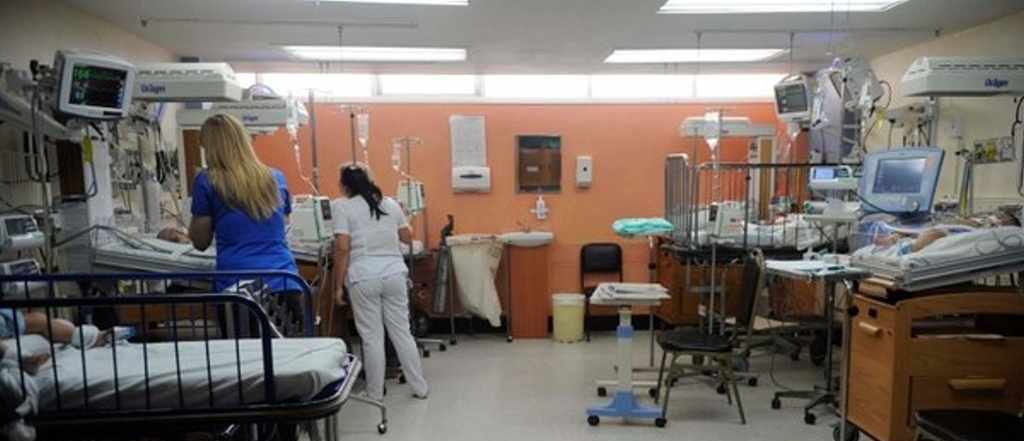Public health is a branch of medical sciences that primarily deals with the surveillance, control, detection and prevention of the emergence and spread of infectious diseases in a defined human population. It involves the protection and improvement of the health of the general public. In clinical medicine, doctors and nurses practice their profession by looking at the health issues of individuals who turn out to be their patients, but in the practice of public health, the entire community and not individuals are regarded as patients. Public health professionals go beyond treating individuals when they fall sick or become injured (which is usually the main task of clinicians) to preventing infectious diseases and other health-related emergency from either occurring or re-occurring within a specific human population. It is the scientific discipline that promotes the health of the general public by preventing, detecting and controlling infectious diseases as they emerge. Public health is a field of the medical sciences that ensures improved quality of life for the general public by making sure that people imbibe good environmental sanitation and personal hygiene aside other relevant precautionary measures as sustainable means of restrain the emergence and spread of infectious diseases.
Infectious diseases are a leading cause of morbidity and mortality across the globe, and they have more ravaging effects in developing or low income countries where environmental sanitation, water supply, standard of living, medical care amongst other developmental factors are still poor. Infectious diseases including malaria, HIV/AIDS, cholera, Ebola virus, Lassa fever, multidrug resistant bacteria, hepatitis, gonorrhea, influenza, tuberculosis and food borne diseases impose colossal economic burden on the entire society. They can cripple the workforce of any nation if taken lightly, and thus timely detection and containment is paramount amongst all other factors. A well trained, prepared and proactive public health labor force is critical in any nation as a panacea to dealing with the threats of emerging and re-emerging infectious diseases.
Some key functions of public health personnel’s include the following:
- To protect the health of the entire community (including a village, local community/district or an entire nation).
- To improve the health status of an entire community through health education and promotion of personal and communal hygiene.
- To focus on the general populations rather than individuals in the research and development of preventive measures against contracting infectious diseases.
- To be proactive, and develop therapeutic and defensive measures against the emergence and spread of infectious diseases in the community.
The development and use of vaccines, antibiotics, and other antimicrobial agents in the fight against infectious agents (including bacteria, viruses and fungi) have significantly saved countless number of people from the fatality caused by infectious diseases. However efficacious and powerful these antimicrobial agents are, and however proactive the activities of public health specialists are in containing the menace of infectious diseases; infectious diseases cannot be completely eradicated from planet earth. This is due in part to the ingenuity of microorganisms (including viruses, protozoa, bacteria and fungi) in evolving new ways of overcoming the protective capacity of the body’s immune system. Secondly, microorganisms are constantly evolving and re-evolving, and many have even developed resistant to some available therapeutic measures.
Pathogenic microorganisms have become more sophisticated and can now survive even in the face of antimicrobial onslaught. Some have even developed mechanisms that allow them to remain undetected in vivo or use the body’s immune system to their own advantage. The entire population still remains at high risk of the menaces of infectious diseases, with the women, children, and the immunocompromised remaining the most vulnerable. New infectious diseases are emerging and even old ones which were taught to have been eradicated are now re-emerging and have remained obstinate in the human population.
Irrespective of the sophistication of pathogenic microorganisms and their inventiveness in evading the body’s immune system and the action of antimicrobial onslaught, it still remains the duty of public health professionals to intervene in the cycle of infectious disease development and spread in the entire community. This can be made possible through improving available public health systems, encouraging environmental sanitation and safety, and also to develop sustainable measures of containing infectious diseases whenever and wherever they may occur. Since public health professional’s regards and look at the general population as its patient, it is vital that relevant health information’s are constantly made available to local communities, vulnerable groups, and the entire population on how to keep infectious organisms at bay, and on how to act when there is any disease outbreak in their locality.
The distribution of parasitic diseases which are of public concern are influenced by many factors including climatic changes, increased globalization and free movement/transport of people across the globe which allows pathogens to be moved from one geographical location to another. Public health microbiologists help to control the spread of communicable diseases including tropical and subtropical parasitic diseases through timely detection and reporting. They also monitor food establishments and water supplies in an attempt to keep them safe and free from infectious agents including microorganisms. In this book, parasitic diseases as it affects the many parts of the African continent and other parts of the tropic and subtropical regions including Asia and South America shall be expanded as a key public health issue in this book. The occurrence and widespread distribution of parasitic diseases across the tropical and subtropical countries of the world is a public health challenge of great importance confronting these regions, and which calls for concerted global efforts to assuage the malady.
Though some of these diseases (termed infectious diseases of poverty, IDP) are no longer a headache in most developed economies such as China, the USA, UK and the rest, the technological and medical advances in these nations coupled with their successes in other areas (the environment, water supply, and sanitation) which have long freed their regions from some of these diseases are also vital to the eradication of IDPs in the developing world, most especially in the African continent. However, it still rest on the shoulders of the African people themselves and other developing economies who are currently undergoing the menaces of IDPs (such as malaria, tuberculosis, schistosomiasis, leishmaniasis, filariasis and onchocerciasis) to come up with innovative ways of totally eradicating or bringing under control the IDPs in their regions since a good chunk of these diseases (though still of global health importance) are no longer of great concern to the developed countries of the world who have in their own approach to things eradicated some of these diseases from their nations.
The World Health Organization (WHO) in view of the fact that IDPs (though a problem of a specific region of the world) still portend a grave danger to the public health of everybody (developed or developing nations), has through the World Bank and its sister agencies started the Special Programme for Research and Training in Tropical Diseases (TDR) which has helped the developing countries (Africa in particular) with the technical know-how, resources, trainings and expertise directed at eradication or containing IDPs in the region. Most importantly, apart from providing research grants and other resources to tackle the diseases of poverty in the sub region, the TDR programme of WHO has also helped to develop and equip indigenous and skilled manpower (including scientists, researchers, academics, health professionals and the rest) who will harness local resources and technology to the effective containment of IDPs in their countries.
References
Aschengrau A and Seage G.R (2013). Essentials of Epidemiology in Public Health. Third edition. Jones and Bartleh Learning,
Beers M.H., Porter R.S., Jones T.V., Kaplan J.L and Berkwits M (2006). The Merck Manual of Diagnosis and Therapy. Eighteenth edition. Merck & Co., Inc, USA.
Chiodini P.L., Moody A.H., Manser D.W (2001). Atlas of medical helminthology and protozoology. 4th ed. Edinburgh: Churchill Livingstone.
Dictionary of Microbiology and Molecular Biology, 3rd Edition. Paul Singleton and Diana Sainsbury. 2006, John Wiley & Sons Ltd. Canada.
Ghosh S (2013). Paniker’s Textbook of Medical Parasitology. Seventh edition. Jaypee Brothers Medical Publishers,
Gillespie S.H and Pearson R.D (2001). Principles and Practice of Clinical Parasitology. John Wiley and Sons Ltd. West Sussex, England.
Gordis L (2013). Epidemiology. Fifth edition. Saunders Publishers, USA.
John D and Petri W.A Jr (2013). Markell and Voge’s Medical Parasitology. Ninth edition.
Kumar V, Abbas A.K, Fausto N and Aster A (2009). Robbins and Cotran Pathologic Basis of Disease. 8th edition. W.B. Saunders Co, USA.
Lee JW (2005). Public health is a social issue. Lancet. 365:1005-6.
Leventhal R and Cheadle R.F (2013). Medical Parasitology. Fifth edition. F.A. Davis Publishers,
Lucas A.O and Gilles H.M (2003). Short Textbook of Public Health Medicine for the tropics. Fourth edition. Hodder Arnold Publication, UK.
MacMahon B., Trichopoulos D (1996). Epidemiology Principles and Methods. 2nd ed. Boston, MA: Little, Brown and Company. USA.
Mandell G.L., Bennett J.E and Dolin R (2000). Principles and practice of infectious diseases, 5th edition. New York: Churchill Livingstone.
Molyneux, D.H., D.R. Hopkins, and N. Zagaria (2004) Disease eradication, elimination and control: the need for accurate and consistent usage. Trends Parasitol, 20(8):347-51.
Nelson K.E and Williams C (2013). Infectious Disease Epidemiology: Theory and Practice. Third edition. Jones and Bartleh Learning
Roberts L, Janovy J (Jr) and Nadler S (2012). Foundations of Parasitology. Ninth edition. McGraw-Hill Publishers, USA.
Schneider M.J (2011). Introduction to Public Health. Third edition. Jones and Bartlett Publishers, Sudbury, Massachusetts, USA.
Discover more from Microbiology Class
Subscribe to get the latest posts sent to your email.





